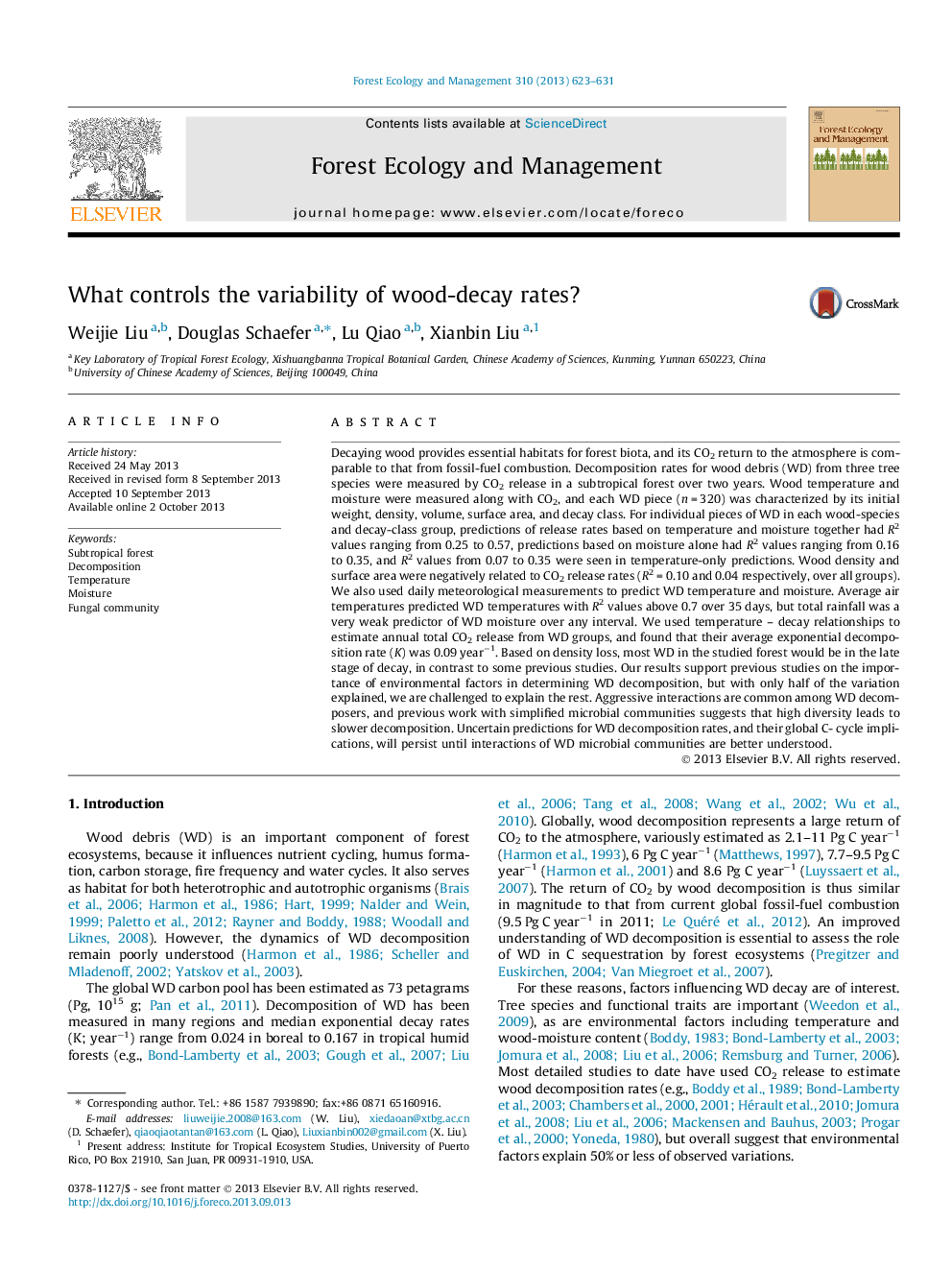| کد مقاله | کد نشریه | سال انتشار | مقاله انگلیسی | نسخه تمام متن |
|---|---|---|---|---|
| 6543809 | 159212 | 2013 | 9 صفحه PDF | دانلود رایگان |
عنوان انگلیسی مقاله ISI
What controls the variability of wood-decay rates?
ترجمه فارسی عنوان
چه چیزی متغیرهای نرخ پوسیدگی چوب را کنترل می کند؟
دانلود مقاله + سفارش ترجمه
دانلود مقاله ISI انگلیسی
رایگان برای ایرانیان
کلمات کلیدی
جنگل های زیر زمینی، تجزیه، درجه حرارت، مرطوب، جامعه قارچ،
موضوعات مرتبط
علوم زیستی و بیوفناوری
علوم کشاورزی و بیولوژیک
بوم شناسی، تکامل، رفتار و سامانه شناسی
چکیده انگلیسی
Decaying wood provides essential habitats for forest biota, and its CO2 return to the atmosphere is comparable to that from fossil-fuel combustion. Decomposition rates for wood debris (WD) from three tree species were measured by CO2 release in a subtropical forest over two years. Wood temperature and moisture were measured along with CO2, and each WD piece (n = 320) was characterized by its initial weight, density, volume, surface area, and decay class. For individual pieces of WD in each wood-species and decay-class group, predictions of release rates based on temperature and moisture together had R2 values ranging from 0.25 to 0.57, predictions based on moisture alone had R2 values ranging from 0.16 to 0.35, and R2 values from 0.07 to 0.35 were seen in temperature-only predictions. Wood density and surface area were negatively related to CO2 release rates (R2 = 0.10 and 0.04 respectively, over all groups). We also used daily meteorological measurements to predict WD temperature and moisture. Average air temperatures predicted WD temperatures with R2 values above 0.7 over 35 days, but total rainfall was a very weak predictor of WD moisture over any interval. We used temperature - decay relationships to estimate annual total CO2 release from WD groups, and found that their average exponential decomposition rate (K) was 0.09 yearâ1. Based on density loss, most WD in the studied forest would be in the late stage of decay, in contrast to some previous studies. Our results support previous studies on the importance of environmental factors in determining WD decomposition, but with only half of the variation explained, we are challenged to explain the rest. Aggressive interactions are common among WD decomposers, and previous work with simplified microbial communities suggests that high diversity leads to slower decomposition. Uncertain predictions for WD decomposition rates, and their global C- cycle implications, will persist until interactions of WD microbial communities are better understood.
ناشر
Database: Elsevier - ScienceDirect (ساینس دایرکت)
Journal: Forest Ecology and Management - Volume 310, 15 December 2013, Pages 623-631
Journal: Forest Ecology and Management - Volume 310, 15 December 2013, Pages 623-631
نویسندگان
Weijie Liu, Douglas Schaefer, Lu Qiao, Xianbin Liu,
